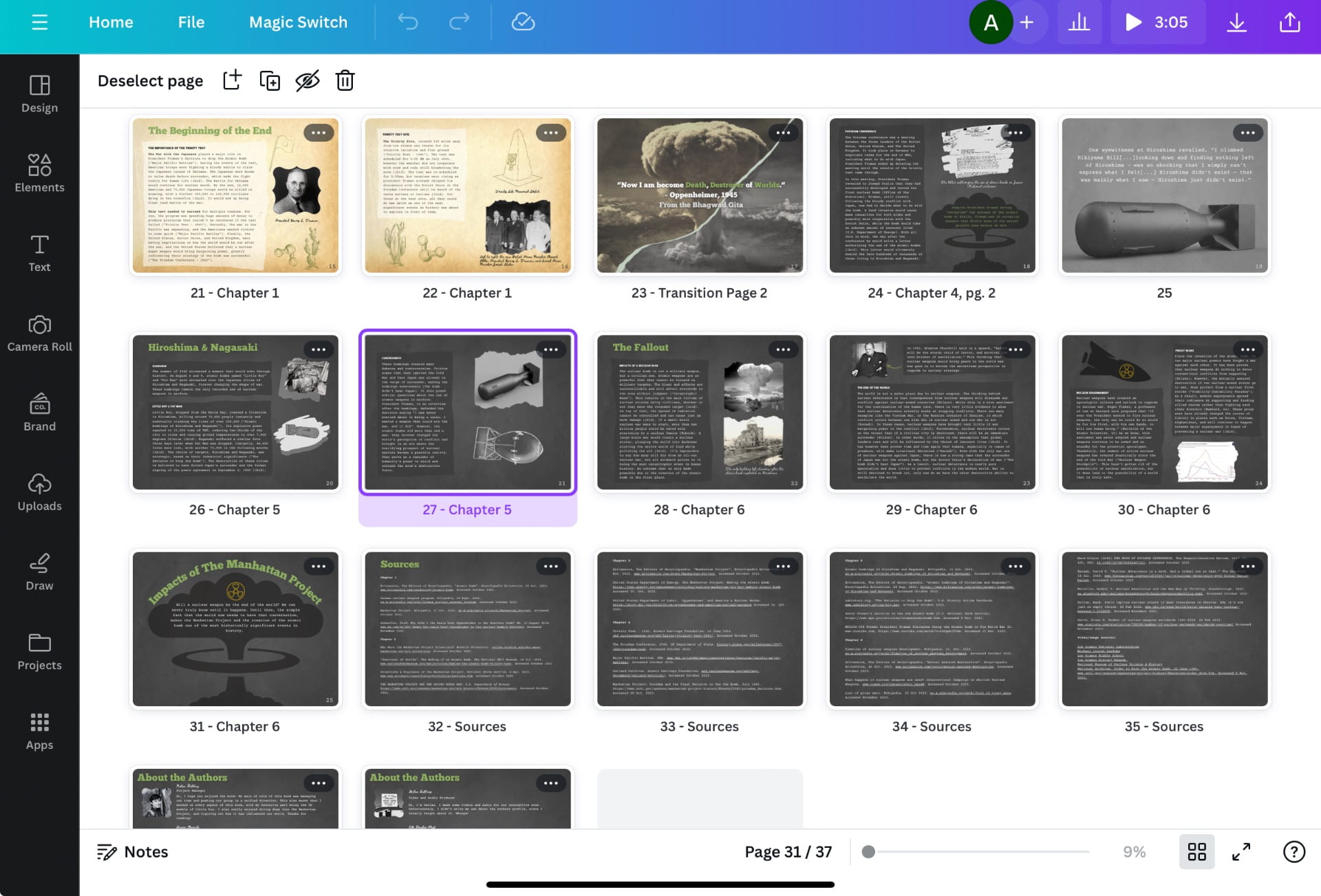How did the development of the atomic bomb change the world?
The Manhattan Project was one of those topics that I knew I would eventually learn about in PLP. It was one of those things that you’d always see older students doing projects on (such as Macbeth, which I’m also excited about). Admittedly, I was really looking forward to it. When I first went into this project, I didn’t know much beyond the basic details. It did help that Christopher Nolan’s Oppenheimer was released the summer before, which had helped to pique my interest. Needless to say, I was more excited than I usually am about a new project, as I’m usually quite apprehensive about new things at first.
Historical significance isn’t exactly new to me. That doesn’t stop us from reviewing its meaning as a class each time it becomes relevant – which is honestly sort of helpful since brains have a funny way of forgetting or misremembering things, even though there’s chunks literally dedicated towards memorization. After reviewing the meaning of historical significance in class, I wrote a paragraph explaining Alexander Hamilton as a historical figure. I honestly only chose this topic because I accidentally ended up listening to an hour long Hamilton podcast episode when I should have been doing my homework. As you can see, I’m a great example of a responsible grade 11 student.

Despite my initial excitement, it had slightly waned once I learned this would be a group project. I know that a lot of my peers dislike group projects – and at times, I feel the same. It requires a lot more effort to work with others rather than individually. Working successfully in a group project requires good communication, great synergy, and honest effort from all individuals involved. The final result of a group project is largely dependent on the type of individuals you’re working with, and because of such, I’m usually somewhat wary going into one. Ms. Willemse likes to use the proverb “you can lead a horse to water, but you can’t make it drink” in reference to us. I usually feel similarly in the sense that I’m incapable of controlling my peers to complete their share of work.
Luckily, this was probably one of the best group projects I’ve experienced in PLP, in terms of shared workload and synergy. My group members were Brooke, Cole, Declan, Nolan, and Sepaus. For our project, we had to create an interactive book on the historical significance of the Manhattan Project. I contributed towards the art and writing aspects of the project, which was easier said than done when all your content had to be displayed in a visually pleasing and artistic way. I also wrote the entirety of chapter 2 and helped revise chapter 3, in addition to graphic design.




Final Book Coming Soon!!!
A lot of the learning done this project was independent, whether it be inside or outside the classroom – including independent research. We completed two mandatory written check-ins throughout our group work, which I think was probably more helpful for myself than it was for my teacher. This allowed me to assess my progress and set certain goals in order to ensure that we achieved a successful outcome. After our first check-in, I decided to time-block a specific time outside of school hours for this project, rather than working on it sporadically. During my second check-in, I reflected on how things had since progressed as well as my work-life balance – which tied in with my learning plan.
My group argued that: “The Manhattan Project reshaped the world’s perception of war by introducing the devastating power of atomic bombs, leading to a fundamental shift in how people perceived the potential consequences of future world conflicts, with deeply troubling and negative impacts on society”.
I think that there’s a lot of ways people can interpret the consequences of the Manhattan Project, and how it has since changed our world. If it’s good or bad, ethical or unethical. It’s undeniable that atomic weapons have the potential for terrible consequences, as they have in the past. War has happened, is happening, and will continue to happen. How does one even justify the use of such a weapon? Nuclear science has applications beyond that of weaponizing it, yet were they worth the bombing of Hiroshima and Nagasaki? The Manhattan Project changed the world in such a way that we, as products of the past, cannot ignore. I’m inclined to think there’s no right answer to any of these questions, since this topic in itself is inherently complex and can be approached from differing perspectives.
Regardless, due to the Manhattan Project’s impact and the potential of what it created, our world is not the same because of how it changed our perception of the world itself.
.
.
.
.
(P.S. Do you ever just pass out immediately after getting home because you’re tired, only to wake up at 5:00am and realize you were planning to finish writing your blog post once you got home? Yeah, that was a fun one.)


Leave a Reply